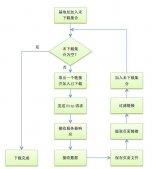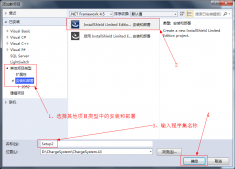本文实例讲述了C#信号量用法。分享给大家供大家参考,具体如下:
|
1
2
3
4
5
6
7
8
9
10
11
12
13
14
15
16
17
18
19
20
21
22
23
24
25
26
27
28
29
30
31
32
33
34
35
36
37
38
39
40
41
42
43
44
45
46
47
48
49
50
51
52
53
54
55
56
57
58
59
60
61
62
63
64
65
66
67
68
69
70
71
72
|
using System;using System.Collections.Generic;using System.Linq;using System.Text;using System.Threading;/* * 标题:如何使用信号量的示例代码 * Author:kagula * Date:2015-6-16 * Environment:VS2010SP1, .NET Framework 4 client profile, C#. * Note:[1]“信号量”可以看成是“授权(证)池”。 * 一个授权(证)池内有零个或多个授权(证)。 * [2]下面的示例sem of Semaphore相当于最多只能有一个授权(证)的授权池。 * [3]每调用一次sem.Release添加一个授权(证)。 * 连接调用多次sem.Release导致超出授权池所能容纳的授权(证)数量,会抛出异常。 * [4]每调用一次sem.WaitOne就使用一个授权(证)。 * */namespace kagula{ class mySemaphore { //第一个参数,代表当前授权次数。 // 0表示没有授权(证)。 //第二个参数,代表Semaphore实例最多能容纳几个授权证。 // 1表示最大授权次数为1次。 // 超出允许的授权次数,比如说sem.Release连续调用了两次,会抛出异常。 public static Semaphore sem = new Semaphore(0, 1); public static void Main() { //添加一次授权。 //释放一个sem.WaitOne()的阻塞。 sem.Release(); myThread mythrd1 = new myThread("Thrd #1"); myThread mythrd2 = new myThread("Thrd #2"); myThread mythrd3 = new myThread("Thrd #3"); myThread mythrd4 = new myThread("Thrd #4"); mythrd1.thrd.Join(); mythrd2.thrd.Join(); mythrd3.thrd.Join(); mythrd4.thrd.Join(); //input any key to continue... Console.ReadKey(); }//end main function }//end main class class myThread { public Thread thrd; public myThread(string name) { thrd = new Thread(this.run); thrd.Name = name; thrd.Start(); } void run() { Console.WriteLine(thrd.Name + "正在等待一个许可(证)……"); //如果不加参数会导致无限等待。 if (mySemaphore.sem.WaitOne(1000)) { Console.WriteLine(thrd.Name + "申请到许可(证)……"); Thread.Sleep(500); //虽然下面添加了许可,但是,其它线程可能没拿到许可,超时退出了。 Console.WriteLine(thrd.Name + "添加一个许可(证)……"); mySemaphore.sem.Release(); } else { Console.WriteLine(thrd.Name + " 超时(等了一段时间还是没拿到许可(证))退出……"); } } }//end class}//end namespace |
希望本文所述对大家C#程序设计有所帮助。















